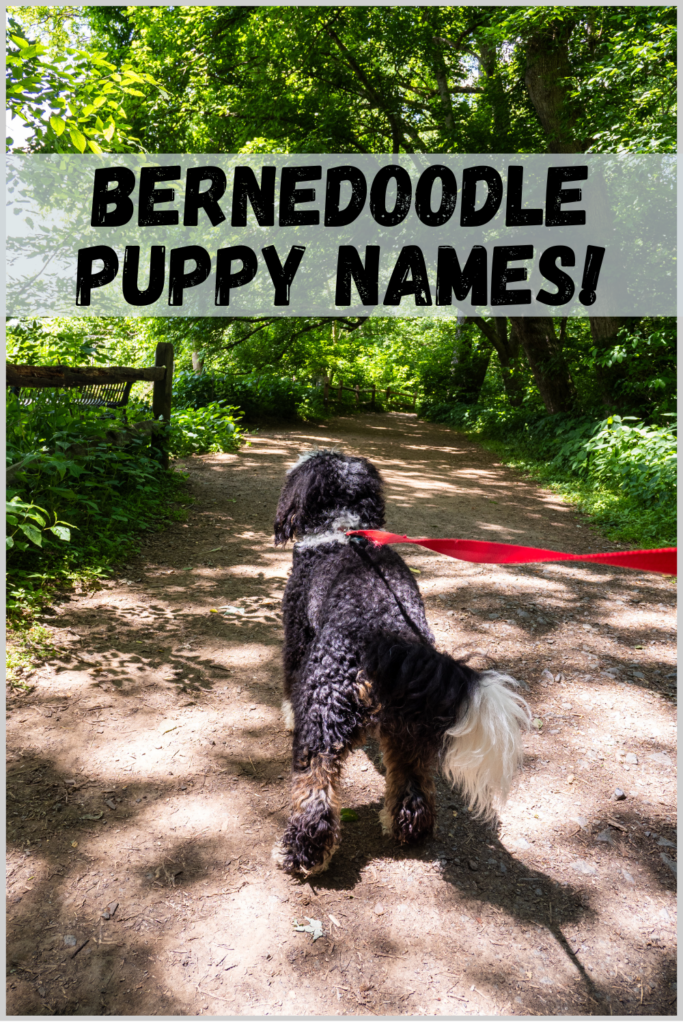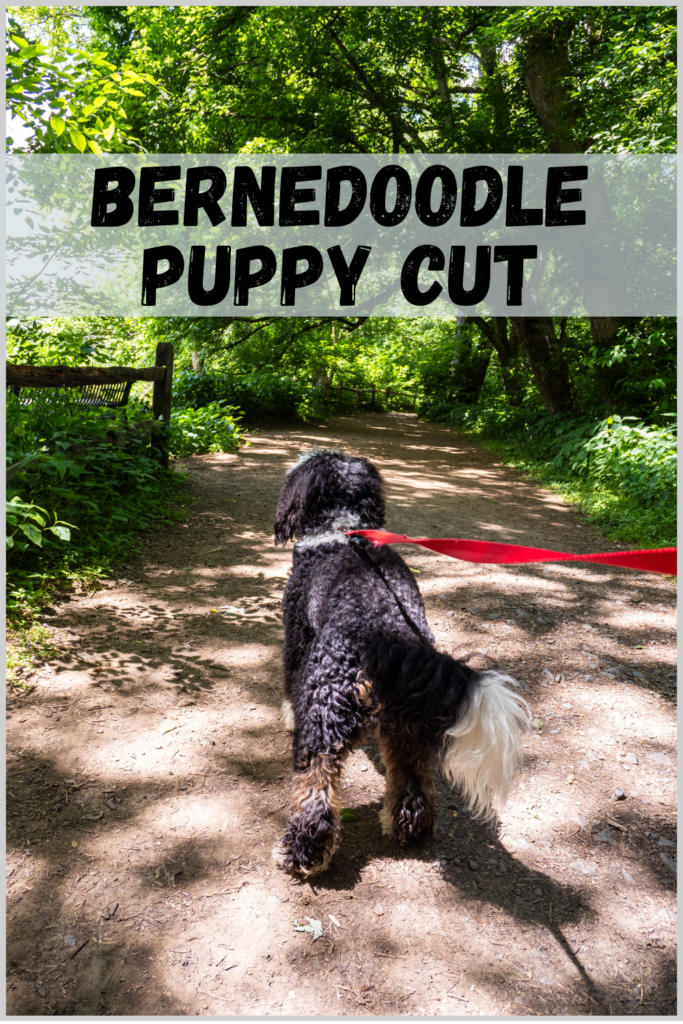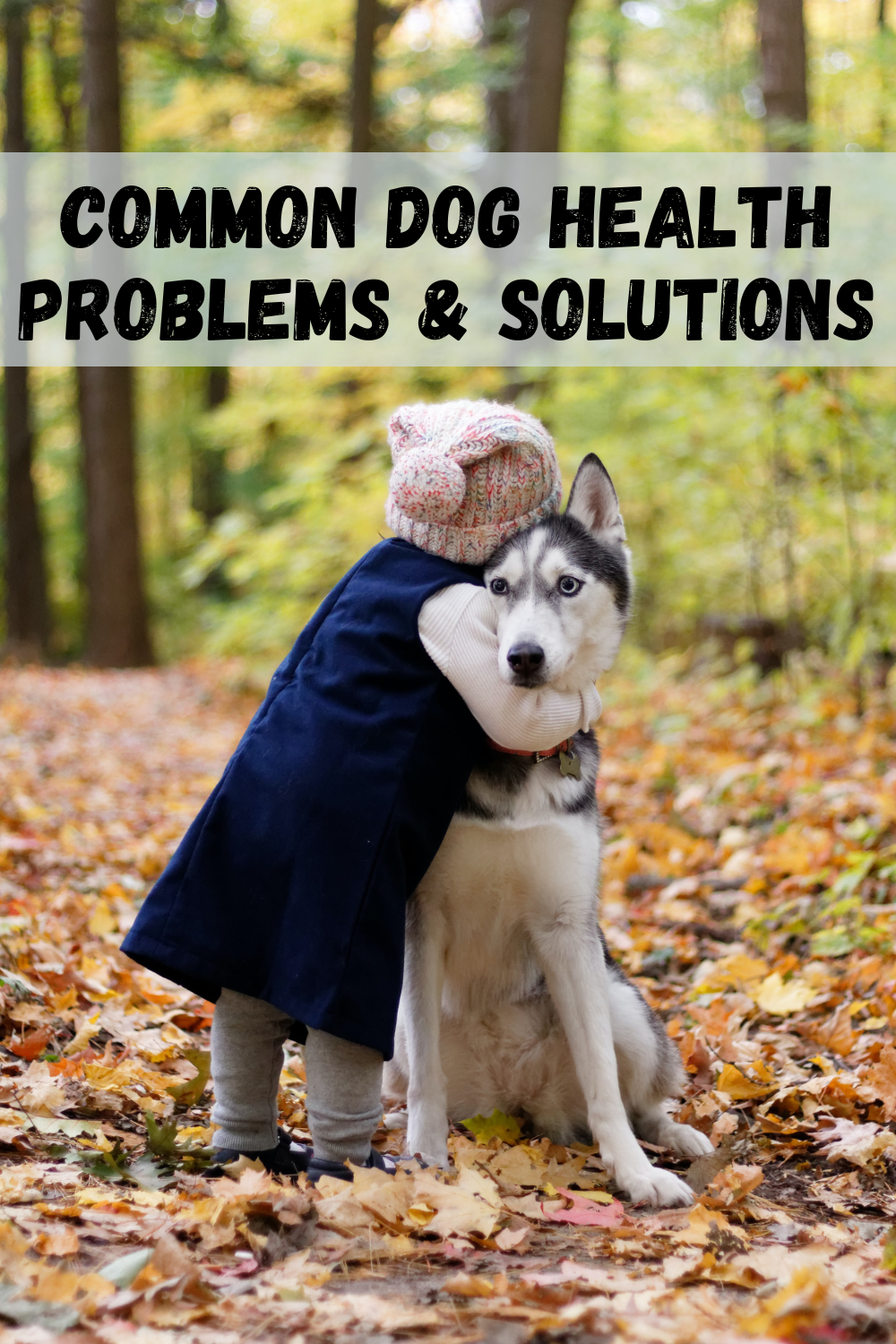
15 Dog Health Problems and Solutions: Your Go-To Guide
Do you know the 15 most common dog health problems and solutions? If not, this will become your go-to guide. From vomiting to heartworms, we will cover all of the common health problems, common symptoms, and what the next steps should be.
I know my first move is to look on the internet when something happens with my Jill, so hopefully this concise, detailed guide will do that for you. As always, our goal is to bring you up-to-date, science-based information on dog diet, nutrition, and health to give you and your pup the long life you deserve together <3
This post is all about the common dog health problems and solutions, your go-to guide when you notice something is off!
Table of Contents

#1: Ear Infections
Dogs can have ear infections for many reasons, including a foreign body inside, bacteria build-up, or if chronic enough, allergies.
Common symptoms: shaking their heads, scratching their ears, inner ear redness, and inflammation. On occasion, an unusual odor and black/yellow discharge.
What do to next: Once you notice any of these symptoms, begin to wash out your dog’s ears twice daily. If symptoms do not decrease within 48 hours, you will need to go to the vet for an ear flushing or cleaning. Due to the nature of ear infections having many probable causes, it is hard to determine if an at-home cleaning can rid this issue. When in doubt, see a vet if symptoms last, as an untreated ear infection can be painful, and cause severe issues down the line like a ruptured or damaged eardrum. If your dog has multiple ear infections within a year, make sure to let your vet know, because it could be due to a potential allergy issue.
#2: Allergies
There are different types of allergies in dogs: food allergies, flea allergies, and seasonal allergies. Looking at your dog’s symptoms can help to determine which and what is going on.
Common symptoms: sneezing, itchy skin, itchy, watery eyes, rashes, hives, hot spots, vomiting, diarrhea.
What to do next: Take notice of when symptoms start and stop, and what they were doing right before symptom onset. Schedule an appointment within the next week to speak with your veterinarian to confirm your dog’s symptoms and discuss steps moving forward. They will recommend starting an elimination diet. This is a diet that helps to test and tease out the specific allergen. Though this can be a tedious and time-consuming diet regimen, it is the most effective!
#3: Skin Infections or Hot Spots
Skin infections or hot spots can happen for many reasons, including excessive licking, excessive scratching, and/or getting cut.
Common symptoms include a red skin lesion, which may contain ooze or pus. Most commonly located on the head, legs, and hips.
What to do next: If comfortable, start by clipping the hair off around it, so it can start to dry and heal properly. Clean the area with a water-based antiseptic spray like DOGSWELL Remedy + Recovery Medicated Antiseptic Spray, and apply a hot spot treatment spray like Veterinary Formula Clinical Care Hot Spot & Itch Relief Medicated Spray. Make sure your pup doesn’t try to bite, lick, or scratch the spot. If the skin lesion is severe or does not improve within 48 hours, make an appointment to see your veterinarian, who can prescribe topical or oral medication.
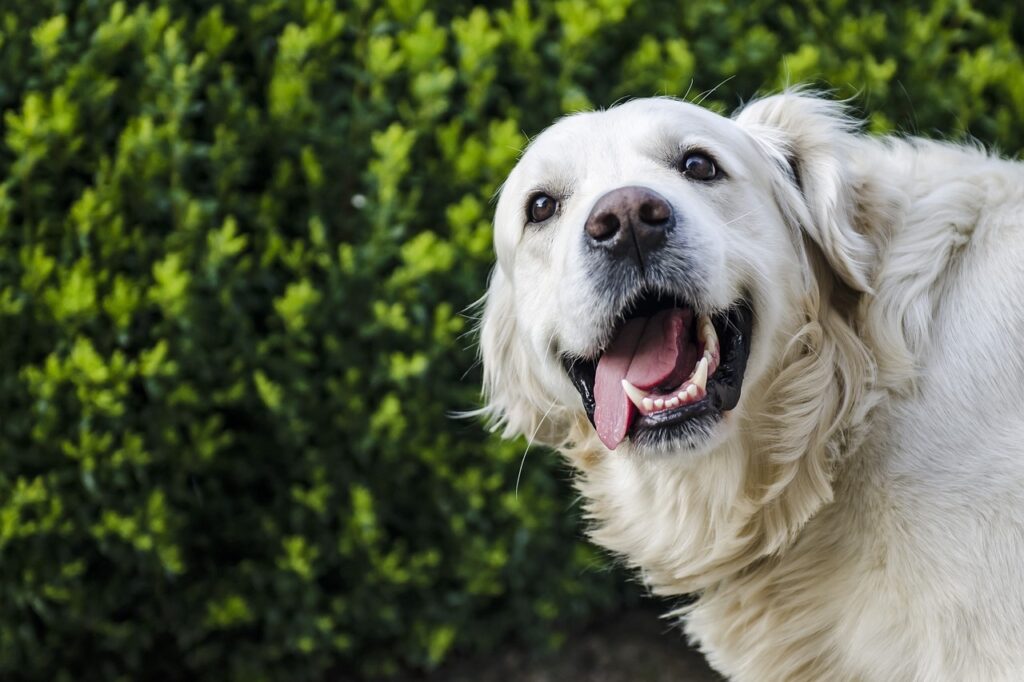
#4: Vomiting
Unfortunately, vomiting is very common in dogs. One bout might be due to the food they just ate or something they shouldn’t have eaten. However, having continuous bouts of vomiting can be a sign of underlying issues.
What to do next: Monitor them and begin to notice what they just ate and what they were just doing. Take note of the consistency and color of the vomit to determine what might be the probable cause. It could be that they were eating too fast, eating something they shouldn’t have, or playing too quickly before digesting. If they vomit more than once a day, continuously, or have any other symptoms, take your dog to the ER.
#5: Diarrhea
Diarrhea is another one that can happen often in dogs. Similar and often associated with vomiting, there are so many reasons for diarrhea, including a diet change, ingesting a foreign body, drinking contaminated water or just having a sensitive stomach.
What to do next: Take note of the consistency and color of their diarrhea to help determine the probable cause. Start by giving them a probiotic supplement like Native Pet Probiotic for Dogs or a natural food probiotic like kefir, yogurt, or even pumpkin puree. Monitor to see if the diarrhea lasts for more than 48 hours. If it does, go see your vet so they can do more testing, and recommend specific diet and lifestyle changes.
#6: Arthritis
Arthritis is usually diagnosed in the later half of life, but prevention and symptom reduction are extremely important.
Common symptoms: stiffness, limping, reluctance to run, walk, jump, or play. Irritable changes in behavior, tenderness to touch, and difficulty getting into a posture for urinating.
What to do next: Immediately add a joint supplement to their diet, such as MYOS Muscle & Joint Formula with Green Lipped Mussel or Fera Pets – Hip and Joint Supplement for Dogs and Cats. Some common ingredients to look for are glucosamine, chondroitin, green lipid mussels (GLM), and omega-3 fatty acids. If the pain is severe or you do not see improvements within the first week of starting on the joint supplement, go see your veterinarian for pain management. They will most likely prescribe NSAIDs based on your dog’s needs. They can and should also discuss different forms of therapy including physiotherapy, cold therapy, acupuncture, and changes in their diet.
Click here to download the FREE PDF Version of these health problems and solutions (great to keep on your phone or on your fridge!)

#7: Obesity
Obesity is technically defined as being 30% above their ideal body weight, however, you most likely do not have a scale at home and are not actively weighing your dog every day. A better way to test for this is to do the rib test and hourglass figure test.
- The rib test involves feeling for your dog’s ribs, you should be able to feel them without them bulging outward. If you cannot or notice they are harder to feel for, there could be an issue here.
- Another visual indicator is the shape of their body. The chest area should be bulging outward and the stomach dipping inward, creating an hourglass figure. This can vary among dog breeds, but the commonality is having some sort of hourglass figure.
Common symptoms: Rib test results and hourglass figure results, excessive breathing or energy exertion with otherwise normal exercise
What to do next: Begin by looking into diet and exercise changes. You could start by decreasing the amount of food you give them daily, and increasing the amount of daily exercise for at least a month. You can even consider putting them on a fresh food diet, preportioned with higher quality ingredients, to help with decreased caloric intake. Some common ones include The Farmer’s Dog or Ollie Dog Food (both delivered to your door)! This is not something to be overlooked, as obesity can lead to many health issues down to line. To only name a few, they are at an increased likelihood of developing high blood pressure, kidney disease, diabetes, arthritis, and heart failure.
#8: Periodontal (Gum) Disease
Have you noticed the brown stuff on your dog’s teeth? There are lots of bacteria there, but fortunately, it’s not that stuff that leads to dental disease. It’s the plaque buildup near and behind their gums and teeth. Plaque is an invisible bacteria that, if left there, will lead to periodontal disease.
Common symptoms: red and inflamed gums, gum bleeding, reluctance to eat due to pain
What to do next: Buy a VOHC-approved toothpaste, like Petsmile Professional Pet Brush and Toothpaste, and brush your dog’s teeth daily. If this is new, this will take some time, patience, and lots of treats. That is okay, as long as you start as soon as possible. Speak to your vet about getting a professional cleaning at your next visit and how to mitigate this moving forward.
#9: Parasites
Parasites live in your dog’s intestinal tract. These include roundworms, hookworms, tapeworms, and coccidia or Giardia. They all stay in your dog’s intestinal tract and can cause a myriad of GI issues.
Common symptoms: Some have no symptoms at all, but if they do, they will have loose stool, diarrhea, blood in the stool (tinted red stool), weight loss, and a decrease in appetite. On the rare occasion, you can see the worms in their feces.
What to do next: If there are symptoms, continue to monitor and note any consistency, texture, and color changes to their feces. If symptoms do not resolve within 48 hours, go to your vet. They will most likely ask for a recent stool sample, so make sure to bring one (fresh from that day, preferably within the last 4-6 hours), or they will need you to come back with a fresh sample later.
Click here to download the FREE PDF Version of these health problems and solutions (great to keep on your phone or on your fridge!)
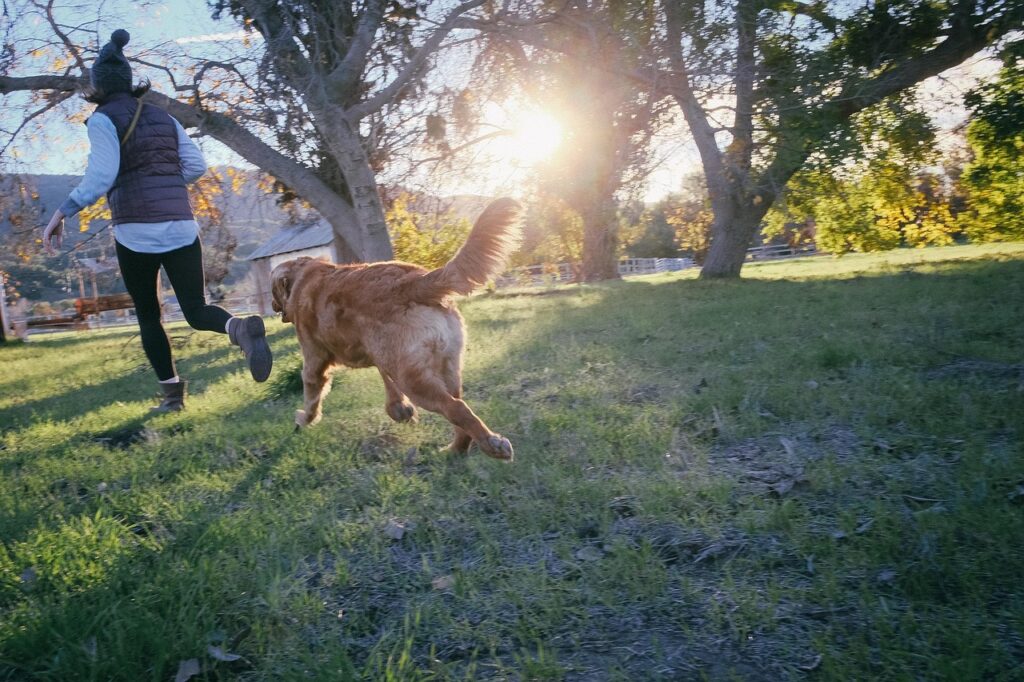
#10: Heartworms
Heartworms are parasites that live in the bloodstream and travel to the heart. This can be caused by mosquito bites that carry heartworms, bites from stray dogs, and other animals like coyotes or wolves that carry heartworms.
Common symptoms: Unfortunately, there are minimal symptoms from early onset, but later signs include a mild, persistent cough, reluctance to exercise, fatigue after moderate activity, decreased appetite, and weight loss.
What to do next: If you have not already, start your dog on a heartworm medication right away. Once you have determined your dog might have some of these symptoms, make an appointment to see your vet to rule out heartworms. These symptoms can be similar to other parasites or GI issues, so make sure to get tested for all of the possible diagnoses.
#11: Fleas
Fleas are external parasites that live on their skin. These can come from other stray animals that might have fleas, or being somewhere where there are fleas in the carpet or around.
Common symptoms: Excessive scratching and biting of their skin, especially around their backside and hind legs. They can be hard to spot with the naked eye, but you will see the “flea dirt”, which is the flea’s poop…
What to do next: If you have not already, speak with a veterinarian about starting on flea medication, like Simparica Trio. Buy a fine toothcomb and tease out fleas daily, even with medication. By doing both, it should be noticeably better within 48 hours.
#12: Tumors or growths
Tumors or growths on their skin can sound scary, but knowing what to do next is important. Most growths are benign, meaning they are not harmful and are a natural part of their aging. On occasion, these growths are malignant and should be detected as soon as possible.
Common symptoms: sores that don’t heal, loss of appetite, unexplained weight loss, swelling, lumps or bumps beneath the skin, difficulty breathing, coughing, straining when going to the bathroom, pain or difficulty walking.
What to do next: Schedule an appointment with your vet when you notice any of these symptoms, especially the lumps and bumps underneath the skin. Early detection is important, and they can help to test if the cells are benign or malignant.
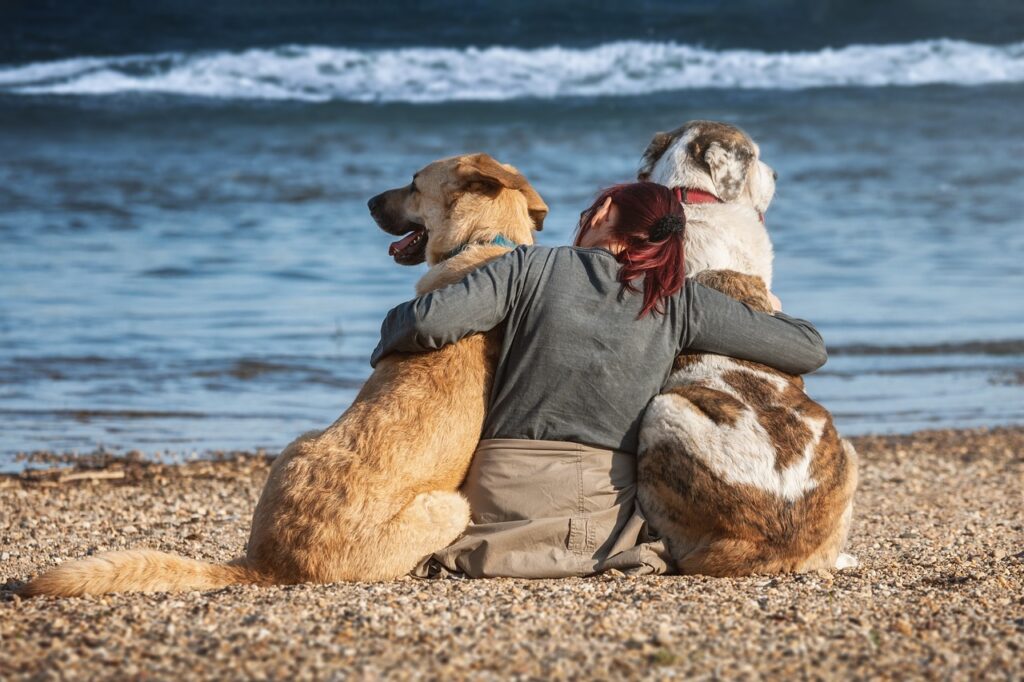
#13: Urinary Tract Infection (UTI)
Urinary tract infections are very common in dogs, but especially female dogs. Knowing the symptoms can help to alleviate symptoms quickly!
Common symptoms: straining to urinate, frequent small amounts of urination, accidents in the house, foul-smelling urine, excessively licking their genitals, and blood in urine
What to do next: UTIs do not go away on their own. You will need to go see a vet to get antibiotics prescribed before it potentially becomes a kidney infection.
#14: Soft Tissue Injuries
Soft tissue injuries are considered bruises, tendonitis, bursitis, and strained or sprained muscles.
Common symptoms: Limping, lethargy, excessive licking of joints or legs, loss of appetite, pain, reluctance to exercise, swollen joints, yelping when touched
What to do next: Some minor injuries can heal on their own. If applicable, put an ice pack on for 15 minutes a day, twice daily. If you see your pup’s symptoms getting worse or not getting any better within the first 48 hours, you should go see a vet. There may be a more serious injury that could need surgery or pain medication. They should also discuss other forms of treatment such as physical therapy.
#15: Toxicity or Food Poisoning
If you notice your dog eating something they should not have or are having any of the symptoms below, they could be experiencing food poisoning.
Common symptoms: diarrhea, vomiting, loss of appetite, seizures or tremors, behavioral changes, lethargy, fatigue, bruising or bleeding
What to do: Take note of the symptoms, and situation at hand, and move any potentially poisonous substances away. Try to determine what they might have ingested as best as possible. Call your vet to see if the substance ingested is poisonous and if they should be taken to the ER. This all depends on your dog’s size and how much of the substance they ingested. If your vet is closed, call the Animal Poison Control Center at (888)426-4435. Take a sample of their vomit, if applicable, to your vet’s office.
Click here to download the FREE PDF Version of these health problems and solutions (great to keep on your phone or on your fridge!)
Conclusion
There you have it! 15 of the most common health problems, symptoms, and solutions. When I notice something off with my dog, I am always so worried and quick to determine what is happening. Yet, there is not much information about the most common dog health problems and solutions written out all in one place. I hope this article is useful for you, as much as it is for me! And as always, have an amazing day with your pup!


